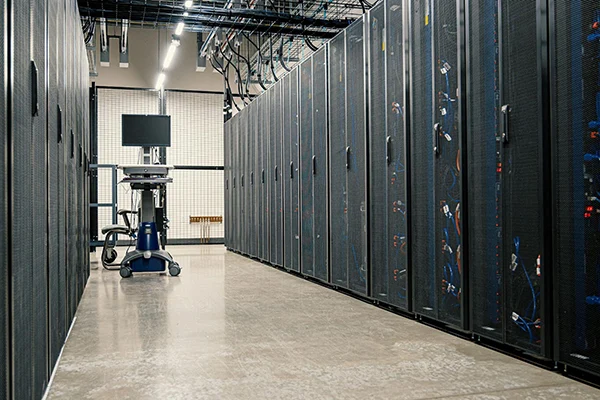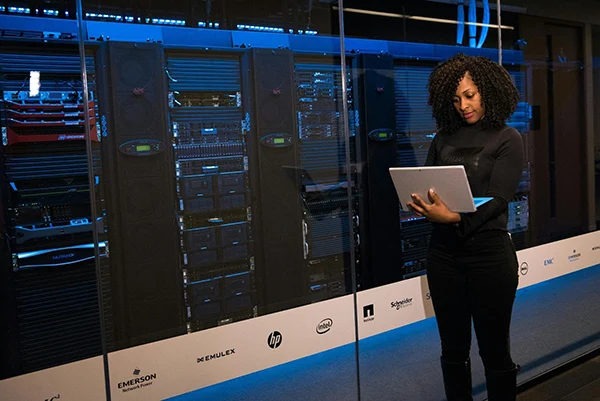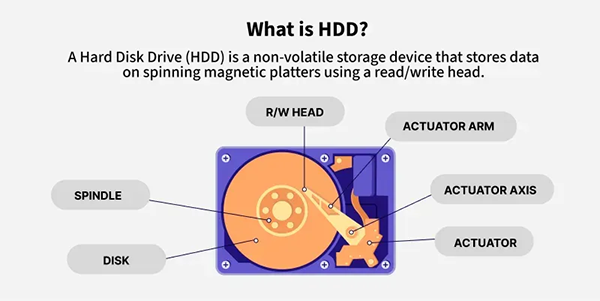Energy-Efficient Servers and Storage: How Green Technologies Are Shaping IT

Sustainability is rapidly becoming a non-negotiable imperative across all industries, and IT is no exception. With energy prices climbing and mounting pressure to reduce emissions, businesses worldwide are rethinking the very foundation of their digital operations.
The sheer scale of the challenge is staggering: data centers alone are projected to consume over 1,000 terawatt-hours (TWh) of electricity globally by 2026, representing roughly 4% of the world’s total electricity demand, and their carbon footprint continues to grow (Source: IEA).
This stark reality makes energy-efficient servers and storage not just a trend, but a leading force in the necessary shift towards sustainable IT. Therefore, in this article, we will delve into what makes these technologies more efficient and the vital role they are already playing in modern data centers.
You’ll also find practical examples, like the Juniper MX204 router base hardware, demonstrating how high performance and energy efficiency can go hand in hand in the real world.
KEY TAKEAWAYS
- Green tech like low-power CPUs and high-density hardware dramatically cuts energy use and heat without sacrificing performance.
- Going green reduces utility bills and carbon footprints, while also helping meet regulatory goals and ESG commitments.
- Key drivers include SSDs, ARM processors, virtualization, smart cooling, and AI-driven power management.
- Leading companies and SMBs are already seeing significant power and cost savings from adopting green IT solutions.
- Despite higher upfront costs, energy-efficient hardware typically pays for itself within five years through operational savings.
- Green tech is essential for viable, profitable, and environmentally responsible IT infrastructure moving forward.
2. What Are Energy-Efficient Servers and Storage?
Energy-efficient servers and storage are built to minimize power consumption and heat generation without impacting performance.
That includes:
- Low-power CPUs are often based on ARM architecture or feature intelligent frequency scaling.
- Hardware optimised for high-density setups, cutting the required rack space.
- Built-in thermal controls, including fans tuned to actual load,
These contrast with traditional systems that often run full force just to stay cool.
Energy-efficient gear often earns certifications such as ENERGY STAR and EPEAT, providing buyers with clear trust signals.
It’s about more advanced engineering. Less waste, more compute per watt, and more room in the rack.
3. Why Green Technologies Matter in IT
Going green is not only a matter of PR- it’s vital for the bottom line and compliance.
Environmental impact: Data centers are big CO₂ emitters. Shifting to efficient hardware shrinks that.
Operational benefits: Lower electricity use signifies smaller utility bills, and if you cut cooling, that’s more savings.
Regulatory pressures: ESG goals and updated energy regulations are pushing businesses to prove their data centers aren’t power-hogs.
Put all that together, and green IT is as much a market play as it is ethical.
4. Key Technologies Driving Energy Efficiency
The green IT toolkit incorporates several game-changers:
- Solid‑State Drives (SSDs)
- Use far less power than accelerating HDDs
- Zero motor noise, significantly reduced heat output
- Use far less power than accelerating HDDs
- Low‑Power CPUs & ARM Processors
- Run cooler when under load
- Offer solid performance per watt
- Run cooler when under load
- Virtualisation & Server Consolidation
- Run various virtual servers on one physical host
- Reduced idle hardware = less idle power use
- Run various virtual servers on one physical host
- Smart & Liquid Cooling Systems
- Temperature sensors transform airflow in real time
- Liquid cooling channels heat directly, with no noisy fans
- Temperature sensors transform airflow in real time
- AI & Power‑Management Automation
- AI tools predict activity spikes
- Dynamically power servers up or down, based on load
- AI tools predict activity spikes
These technologies work well together. You get maximum performance from every level-storage, compute, cooling, and control.
5. Real‑World Adoption and Success Stories

Green IT isn’t theoretical, it’s all happening right now.
Google and Amazon report data-center effectiveness at or beyond benchmarks, thanks to custom server setups and AI-driven cooling.
Smaller shops are consolidating servers, following suit, switching to SSD‑only storage, and using purpose‑built switches.
One mid‑sized cloud server swapped legacy kit for SSD arrays and ARM‑based blades, cut its power usage by ~30%, and operating costs followed suit.
Everyone, from hyperscalers to SMBs, is measuring improvements- reduced kilowatt-hours- a smaller carbon footprint, hours, and even rebates or tax breaks in some regions.
INTERESTING FACT
“Replacing traditional Hard Disk Drives (HDDs) with Solid-State Drives (SSDs) can slash storage-related energy consumption by an impressive 80-90%.”

6. Challenges and Considerations
Going green isn’t plug-and-play.
Upfront cost: Efficient hardware tends to come with a premium.
Compatibility concerns: Some legacy apps dislike ARM or virtualized environments.
Planning & migration: You need solid transition paths, strategy-testing, and fallback plans.
However, with TCO decreasing over time, smart planning, and the ROI starts to accumulate quickly.
7. Final Thoughts and the Future of Green IT
Energy-efficient hardware may cost more today, but-spoiler alert- it pays off in under five years.
Looking ahead, we’ll see even smarter gear: predictive cooling, chips optimized for AI, and more liquid-cooled racks by default. Networks will follow suit – think battery-powered edge devices, such as top-tier base security solutions like Juniper SRX4600 AC Firewall, seamlessly incorporated into eco-conscious data centers.
Green tech isn’t optional. It’s how IT infrastructure stays viable, profitable, and planet-friendly.
Bottom Line
Energy-efficient servers and storage are revitalizing IT from the inside out. Shrinkers of carbon footprints, savers on energy bills, and enablers of compliance – these technologies are a win-win.
With some planning, businesses can future‑proof their building infrastructure while showing they care for cost and the climate.
Ans: It significantly cuts electricity bills, reduces your carbon footprint, and helps meet environmental compliance.
Ans: They use much less power and generate less heat than older HDDs because they have no moving parts.
Ans: Not at all. Businesses of all sizes can benefit from green IT by adopting efficient hardware and practices like server virtualization.
Ans: Yes, initial costs can be higher, but the energy savings typically lead to a strong return on investment within a few years.
Ans: Start by evaluating your current hardware for energy efficiency and consider replacing older, power-hungry components with newer, certified green alternatives.
